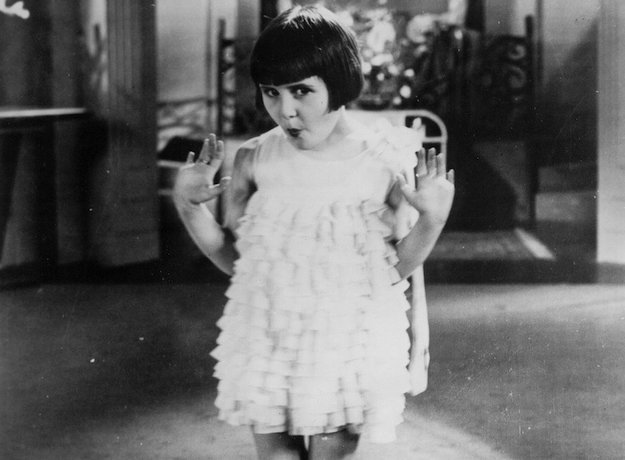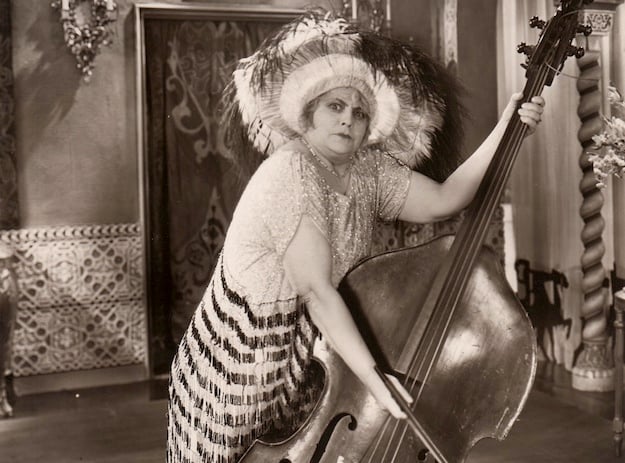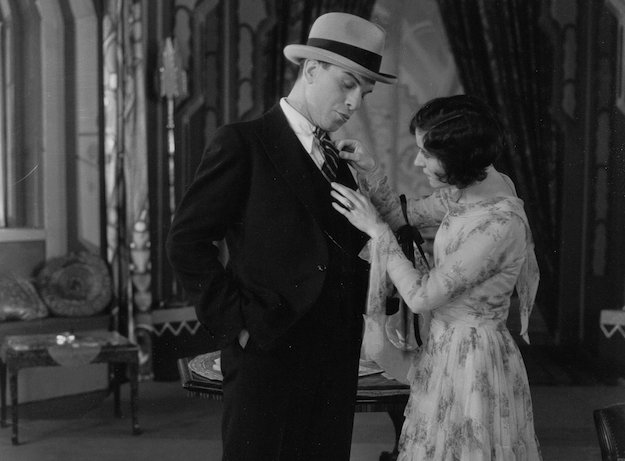TCM Diary: Vitaphone Varieties

Baby Rose Marie
The coming of sound may be encumbered with more print-the-legend misconceptions than any other moment in film history, from the myth of stars destroyed by squeaky voices to the notion that talkies burst upon an astonished world with The Jazz Singer (1927). Actually, sound film stuttered through a series of false starts, and with each development—Edison’s synchronized Kinetophones in 1913, Lee DeForest’s 1922 sound-on-film breakthrough—talking pictures roused some excitement but were dismissed as a novelty, a gimmick that could never compete with the fluent artistry of silent film.
Nonetheless, in 1926, Warner Brothers, still a struggling minor studio, gambled on an improved sound film process called Vitaphone. Developed by Western Electric and Bell Labs, the system used 16-inch shellac discs played on a turntable synched to a projector by a single motor. Though it worked well (as long as the film didn’t break and the record didn’t skip, in which case the projectionist was in big trouble), sound on disc was a technological dead end: within a few years even Warner would switch over to the Movietone process that recorded sound on film as an optical track. Vitaphone’s heyday (1926-1930) was a transitional period, all adolescent gawkiness and energy, and this awkward age of “vaudeville in a can” sound shorts and silent films with recorded scores has been treated as little more than a footnote to The Jazz Singer, the Vitaphone part-talkie whose wildfire popularity sparked a panicked rush toward sound by the Hollywood studios.
This neglect began to change in 1991 when Ron Hutchinson co-founded the Vitaphone Project with a group of vintage record collectors, who set out to track down and reunite Vitaphone discs with film prints held by archives. Partnering with the UCLA Film & Television Archive, Warner Brothers, the Library of Congress and others, they have helped restore dozens of shorts and features, most unseen since their original release. Public screenings and Warner Archive DVD releases spawned an ardent new audience for these resurrected films with their catchy syncopated rhythms, tonic zaniness, and brash, let-me-entertain-you spirit. Watching a bunch of Vitaphone shorts is as close as we can ever come to catching a night of vaudeville at the Palace.

Trixie Friganza
It’s a well-known irony that Vitaphone shorts helped to kill vaudeville while also preserving it, like a collection of butterflies on pins—only a lot louder and livelier. In their studios in Brooklyn and later Hollywood, Warner Bros. made straightforward documents of top vaudevillians doing their acts, as well as performances by popular dance bands, enabling theaters all over the country to replace live performers with films. (The Joe Frisco short Happy Hottentots offers a hilarious, withering portrait of the lives of entertainers who rushed on to do tired entr’actes in cut-rate movie houses.)
Vaudeville was the primordial soup of 20th-century mass culture. This grueling circuit—variety shows with constantly changing bills of touring performers—graduated a who’s who of the 20th-century’s greatest entertainers: Buster Keaton, W.C. Fields, the Marx Brothers, Mae West, James Cagney, Jack Benny, Fred Astaire, Bill “Bojangles” Robinson, Judy Garland… the list is almost endless. A lot of them came from backgrounds of desperate poverty. Immigrants turned their despised ethnicity into comic coin, while women like Trixie Friganza made hay of their hefty proportions (in My Bag O’ Trix she points out her resemblance to her double bass) and brassy personalities, getting away with risqué, rebellious humor. Laughter and music were kings, but vaudeville also nurtured magic, eccentric dancing, impressions, acrobatics, dog acts, and sideshow spectacles like Chaz Chase (The Unique Comedian), who ate cigars, matches, ukuleles, and his own clothes. Vaudeville outdid anything André Breton and his cohort could come up with in the way of surrealism. The ecstatically bizarre Sharps and Flats (starring the chinless, floppy-haired, owlish-spectacled Jimmy Conlin, later a Preston Sturges regular, and his partner Myrtle Glass) makes Ionesco’s theatre of the absurd look tame by comparison.
More precious than glimpses of future stars as youthful strivers are records of people we would never have heard of without Vitaphone, like cult favorites Shaw and Lee (The Beau Brummels, Going Places). You can read online the history of this pair, originally Schutzman and Levy, yet their films remain confounding in the best way. Their act is deceptively simple and ineffably weird, a kind of subtly warped deadpan parody of standard vaudevillian antics: two lumpish men in matching bowling hats, one stout and one skinny, they stand stock still, eyes awkwardly averted, and sing sly nonsense lyrics, then dance in unison like wind-up automatons. If Shaw and Lee seem like cryptic messengers from another world, they also seem knowingly modern in their ability to play with pop culture clichés.

George Burns and Gracie Allen
Early Vitaphone shorts aped live theater with proscenium sets, stationary cameras, and performers reaching through the fourth wall to acknowledge a presumed audience with asides and curtain calls. Limited by technology that initially made camera movement difficult, Vitaphone shorts compensated by focusing on what only sound films could offer: the human voice, singing or wisecracking, and the cream of music and dance. While American silent film was largely bleached white, Vitaphone shorts captured great African-American artists like the operatic hipster Cab Calloway and (in the short All-Colored Vaudeville), the very young Nicholas Brothers, Harold and Fayard, dressed better than the Duke of Windsor and dancing up a joyous storm.
One of the finest hybrids of silent film and Vitaphone jazziness is the Colleen Moore vehicle Why Be Good? (1929), which combines the visual sophistication and wit of director William A. Seiter with a sizzling score played by jazz greats like Eddie Lang, Joe Venuti, and Jimmy Dorsey, all in service of a lively, expressive comedienne who looks like an angular New Yorker flapper cartoon come to life. A print of the film, long thought to be lost, was serendipitously rediscovered in the 1990s and a restoration was completed in 2014. Filled with wild parties in art deco penthouses, Charleston contests, steamy nightclubs, drunken playboys and feisty shopgirls, Why Be Good? is about the jitters and joys of living in a changing time, caught between old and new—a perfect subject for film as it teetered on the brink of a revolution.
In honor of Vitaphone’s 90th anniversary, Ron Hutchinson will guest program and co-host a 24-hour Vitaphone marathon on December 5 on Turner Classic Movies. All the films mentioned here will be shown as part of this program.







